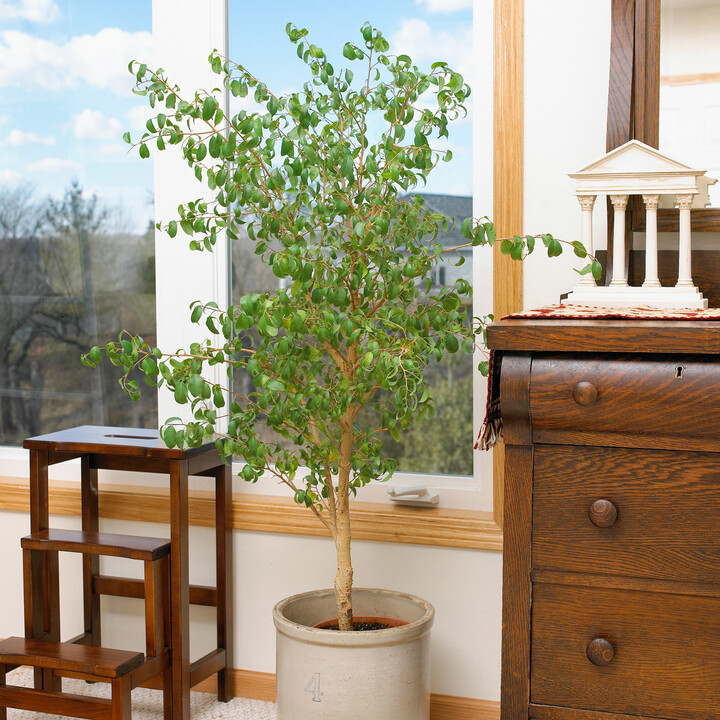A versatile and tough group of plants often grown indoors, ficus comes in all sorts of forms, ranging from creeping vine to giant tree. Its glossy leaves grow in a variety of colors and patterns. And even though this cousin of the edible fig is a tropical plant, it survives in a wide variety of conditions.

GENUS NAME Ficus | LIGHT Part Sun Shade Sun | PLANT TYPE Houseplant |
HEIGHT Under 6 inches 6 to 12 inches 1 to 3 feet 3 to 8 feet 8 to 20 feet 20 feet or more | |
WIDTH 1 to 30 feet wide | FOLIAGE COLOR Blue/Green Purple/Burgundy |
PROBLEM SOLVERS Drought Tolerant | SPECIAL FEATURES Low Maintenance |
ZONES 6 7 8 9 10 11 | PROPAGATION Layering Stem Cuttings |
Colorful Combinations
The 850 species span a wide range of looks. Leaves grow dark burgundy on the rubber plant, diamond-shape on the weeping fig, small-as-a-pinky-nail on some creeping varieties, and as large as a football on others.
Related: Why is My Ficus Dropping Sticky Leaves?
Ficus Care Must-Knows
Needs vary among the varieties, but generally, ficus prefer well-drained, fertile soil kept consistently moist. Although it can tolerate an occasional missed watering, allowing them to dry out regularly stresses the plant.
When it comes to lighting, ficus plants can be somewhat finicky. Ficus require high levels of light, especially for the best coloring of its leaves. But there are varieties of ficus that tolerate medium to low-light conditions. In low-light conditions, ficus tend to be sparser and can have poorer branching habits. They also tend to be much slower growing in less light. If moved suddenly to a new spot with different light levels than it's used to, ficus can drop a large amount of leaves. Though alarming, the plant recovers once it adapts to new conditions.
n the right conditions, ficus grow relatively fast. If you've got a large kind, this can become troublesome because it can quickly outgrow its space. Regular pruning prevents this and promotes good branching. However, there is a limit to the amount of pruning larger species of ficus tolerate. For woody types, starting a new plant by air layering is the best option.
Air layering consists of scarring or removing some of the bark and dusting the wound with rooting hormone. Wrap it in moist sphagnum moss and dark plastic to keep it moist, humid, and out of the light. In 2 to 3 months roots will emerge. As these roots develop, keep the moss moist, and check every few weeks for root growth. Once roots begin to grow in the sphagnum, cut the stem below the new root and plant.